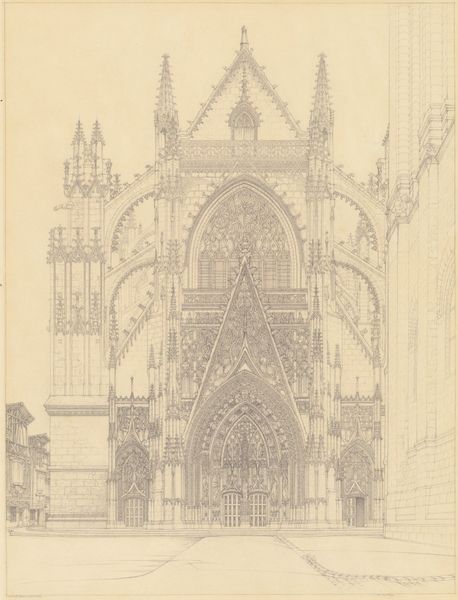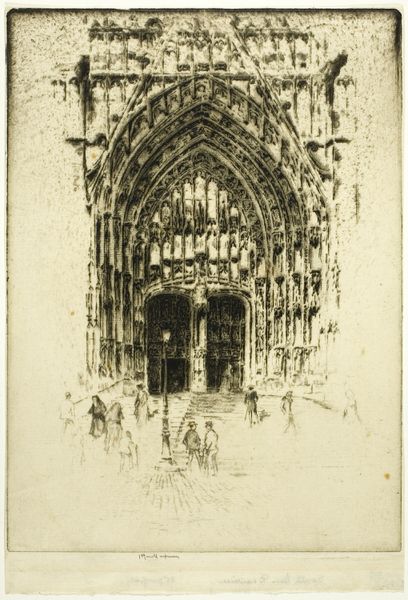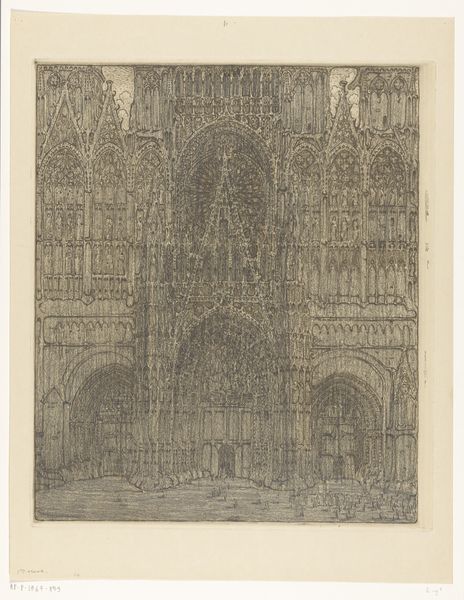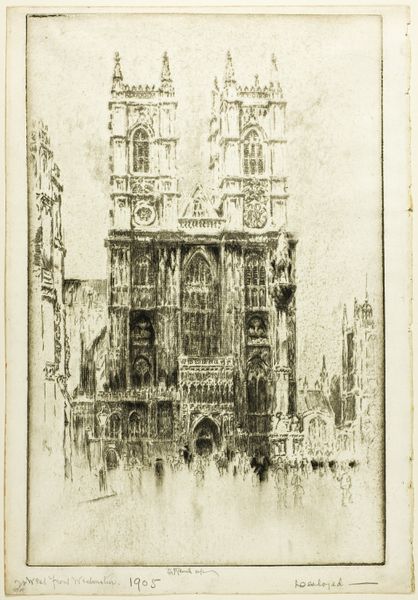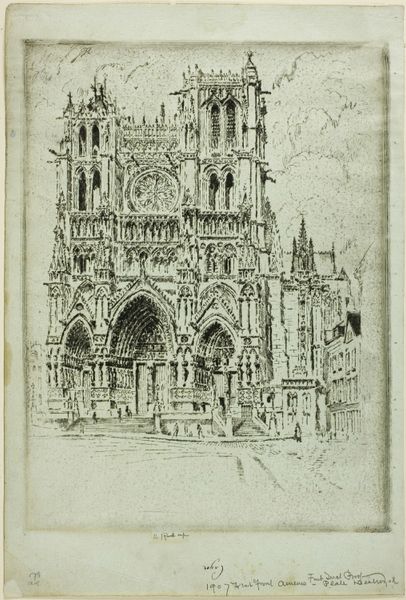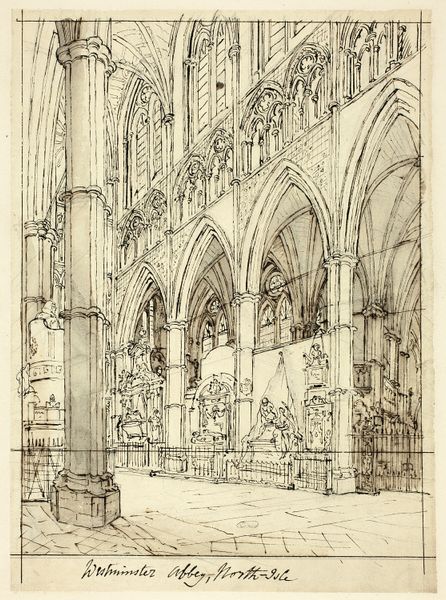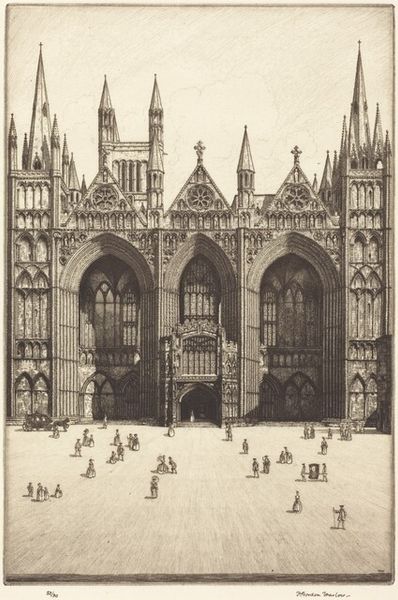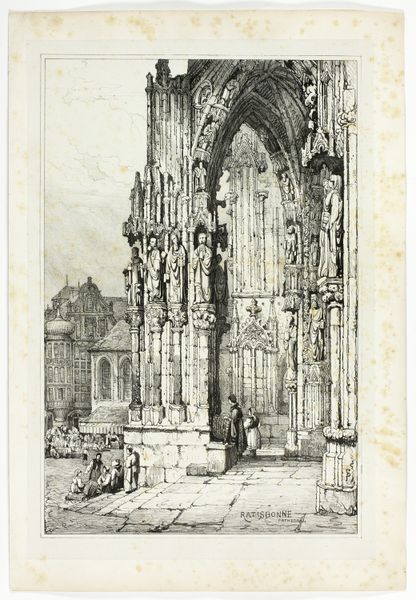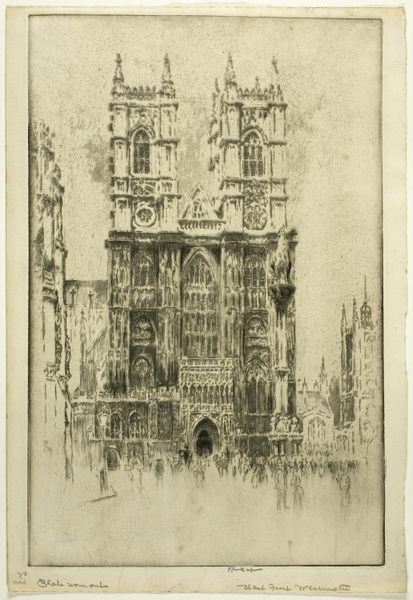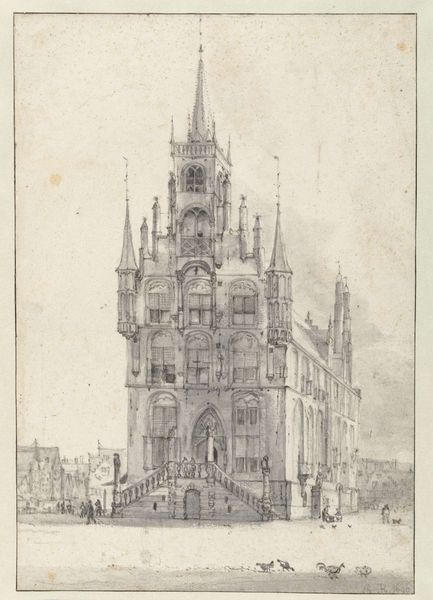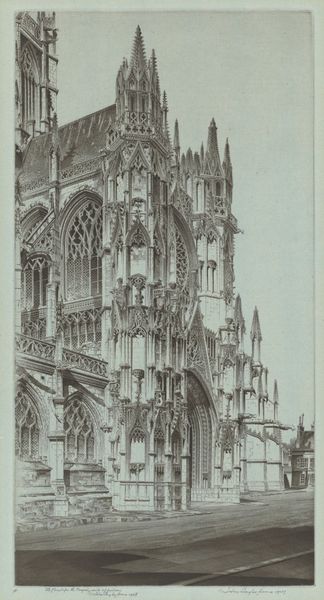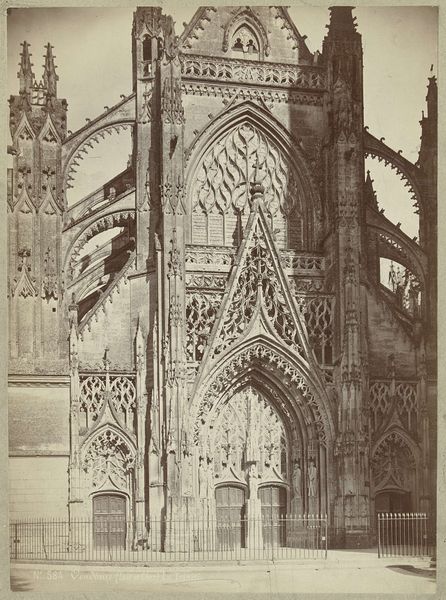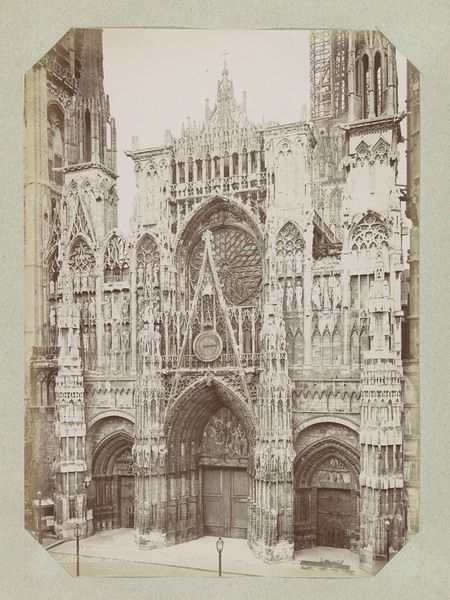
drawing, print, ink, engraving, architecture
#
drawing
# print
#
form
#
ink
#
geometric
#
line
#
cityscape
#
engraving
#
architecture
Dimensions: plate: 35.56 x 28.89 cm (14 x 11 3/8 in.) sheet: 45.4 x 32.39 cm (17 7/8 x 12 3/4 in.)
Copyright: National Gallery of Art: CC0 1.0
Curator: Welcome. We're looking at John Taylor Arms' "Lace in Stone, Rouen Cathedral" from 1927, rendered as an engraving. What strikes you first? Editor: It’s incredibly delicate. The detail is overwhelming, almost dizzying. It’s not stone; it’s… a spiderweb of faith. Curator: Exactly! The print medium—etching—allows for such a density of lines. Think of the artist painstakingly working, line by line, mirroring the masons who erected the cathedral itself, block by block. There’s a direct relationship, a hand-made quality. Editor: And that labor invests the image with a certain sacred quality, reflecting the devotional aspect of constructing these massive houses of worship. All those pointed arches aiming heavenward—it's classic Gothic symbolism. The rose window, a Mary symbol perhaps? Curator: Quite possibly. But let’s think about the act of reproducing it. Arms' work democratizes that symbolic power, moving it from a specific site to printed matter available for wider circulation. A tension emerges between the unique architectural feat and the mass-produced image. Editor: Yet the medium itself argues against pure mass production. Each print holds the mark of the hand. You still need exceptional craftsmanship to achieve such precision and depth with those tools. Think about the ink, the paper... these things carry weight, too. The texture evokes that of stone, a little. Curator: Good point. It bridges a perceived gap between the spiritual aspirations embedded in the building and the tangible resources that allowed it, and this image, to come into existence. We see a cathedral but, furthermore, we appreciate the immense labor and resources consumed in its realization. Editor: I see the repeating patterns, geometric forms that tell the story of sacred geometry. This building stands as testament to more than devotion, also knowledge, precision and vision, made literal for anyone to interpret across time. Curator: Absolutely. It all contributes to an overwhelming visual tapestry. Thanks, I had not quite connected it to the geometry that informed its physical space. Editor: The beauty in structure.
Comments
No comments
Be the first to comment and join the conversation on the ultimate creative platform.
